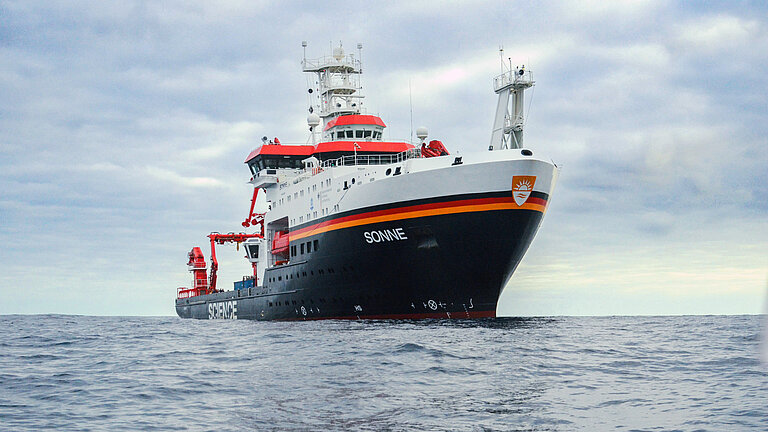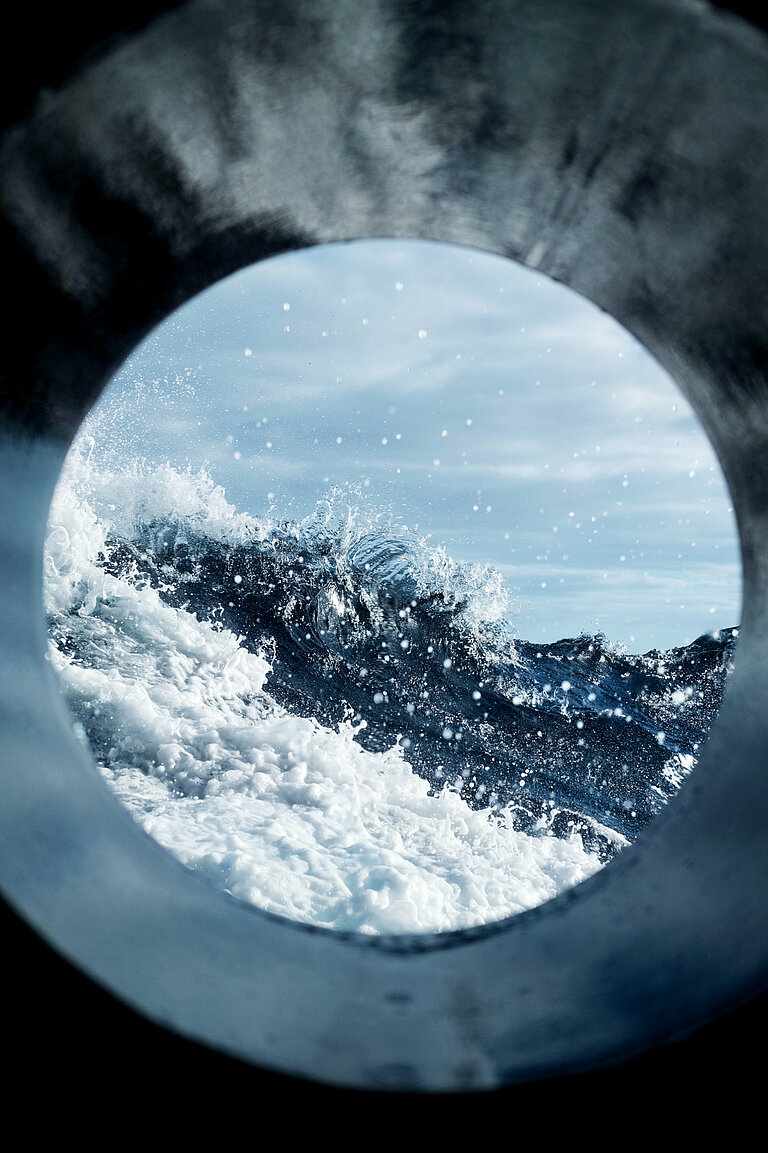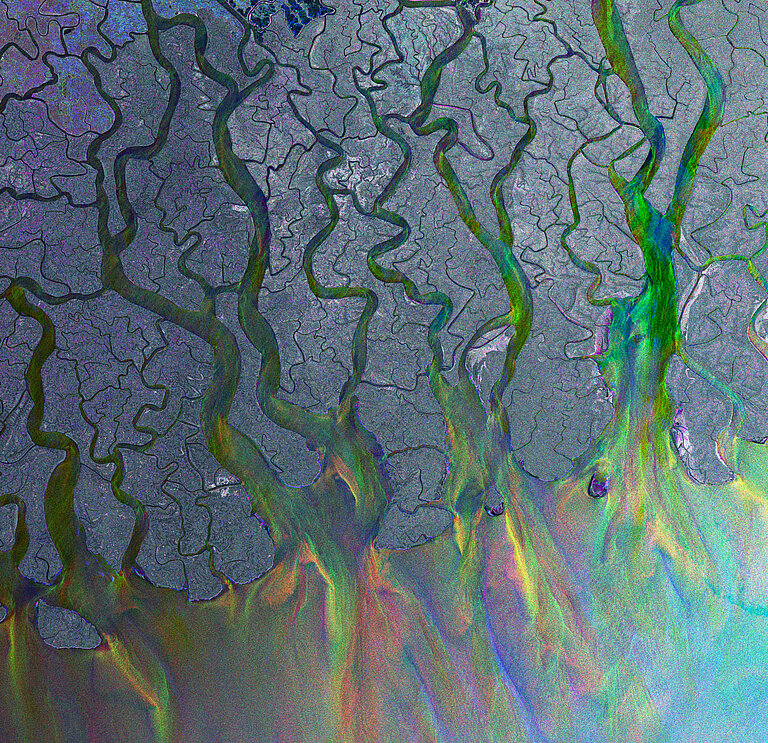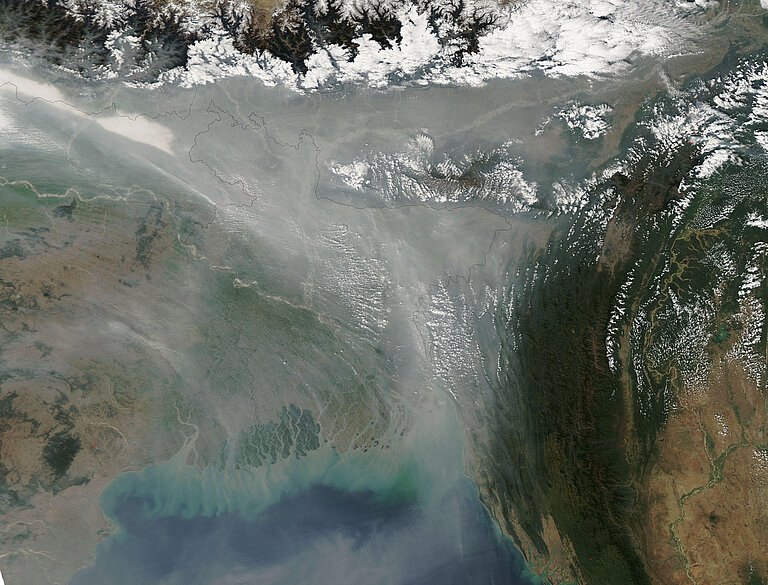Above and Below Water: Understanding Human Impact on the Bay of Bengal
SONNE Expedition SO305 Creates First Comprehensive Dataset on Biogeochemistry
Under the name BIOCAT, the SONNE expedition 305, led by the GEOMAR Helmholtz Centre for Ocean Research Kiel, has started in the Indian Ocean. BIOCAT stands for "Biogeochemical and Atmospheric Processes in the Bay of Bengal", which succinctly summarises the scope of the programme. The international team of 39 scientists aims to answer two main questions during the expedition.
The first question concerns the oxygen minimum zone in the Bay of Bengal. Senior scientist Professor Dr. Hermann Bange, a biogeochemist at GEOMAR, explains: "We find a layer between 150 and 800 metres deep where the oxygen content is very low, making it hostile to most organisms. However, unlike other oxygen minimum zones, such as those in the Arabian Sea, this one is not denitrifying". Denitrification refers to a microbiological process in which certain microorganisms use oxygen molecules from nitrogen compounds, essentially breathing nitrate, and convert it to elemental nitrogen (N2). However, N2 is no longer readily available to other organisms. So why isn't this happening in the Bay of Bengal? One possible explanation is the influence of freshwater input from the Ganges delta. This delta, the largest in the world, is about 350 kilometres wide, where the Ganges and Brahmaputra rivers fan out into numerous waterways before emptying into the sea.
To unravel this mystery, the expedition will measure and analyse the major fluxes, oxygen levels, sources and transformation processes of nitrogen and organic matter on an extensive zigzag course across the ocean basin. The results will help to better understand and predict the formation and future development of the Oxygen Minimum Zone.
The second major issue is the so-called brown haze that regularly moves over the Indian Ocean in winter and spring. The haze is made up of suspended particles such as soot, mainly from emissions from transport and industry in the region. Other sources of air pollution include agricultural burning of fields and forests, and heating and cooking with wood fires. "What are the effects of atmospheric inputs on water biogeochemistry? That's what we want to find out," explains Hermann Bange.
Besides GEOMAR, researchers from the University of Hamburg, the University of Southern Denmark in Odense and the Leibniz Institute for Tropospheric Research (TROPOS) in Leipzig are involved in BIOCAT. Their results will contribute to two major international research programmes. The first is the Second International Indian Ocean Expedition (IIOE-2), which has been running since 2015. This international research programme builds on a unique series of expeditions in the 1960s. At that time, 40 research vessels from 13 countries coordinated their efforts to explore the Indian Ocean for the first time, collecting data across multiple disciplines of marine science. Until then, little was known about this ocean basin. The aim of the expedition was to study the oceanography of the Indian Ocean in detail and to make the area as well known as the Atlantic and the Pacific. Marine scientists from Kiel were also involved at the time.
The results will also contribute to the global Surface Ocean-Lower Atmosphere Study (SOLAS) research programme, which investigates the complex physical, chemical and biological exchange processes between the ocean and the atmosphere.
Expedition at a Glance:
SONNE Expedition SO305
Name: BIOCAT-IIOE-2
Chief Scientist: Prof. Dr. Hermann Bange
Dates: 10.04.2024 - 22.05.2024
Departure: Colombo (Sri Lanka)
Arrival: Singapore (Singapore)
Expedition Area: Bay of Bengal

The research vessel SONNE has departed for a six-week expedition in the Bay of Bengal. On board is a team of 39 international scientists who will study the impact of human activities on the ocean basin between India, Bangladesh and Myanmar. Photo: Jan Steffen, GEOMAR

Among other things, the complex exchange processes between the ocean and the atmosphere will be studied. Photo: Riel Ingeniero, GEOMAR

The Ganges delta is the largest river delta in the world: the Ganges and Brahmaputra rivers fan out into a multitude of waterways and flow into the Bay of Bengal over a width of around 350 kilometres, providing a huge influx of fresh water. Photo: ESA

South of the Himalayas, along the eastern border of Bangladesh, a pale grey haze is moving towards the Bay of Bengal. In addition to agricultural fires, urban and industrial pollution in the region are the main contributors to the so-called brown cloud. Its impact on the biogeochemistry of the water will be investigated during the BIOCAT expedition. Photo: NASA


